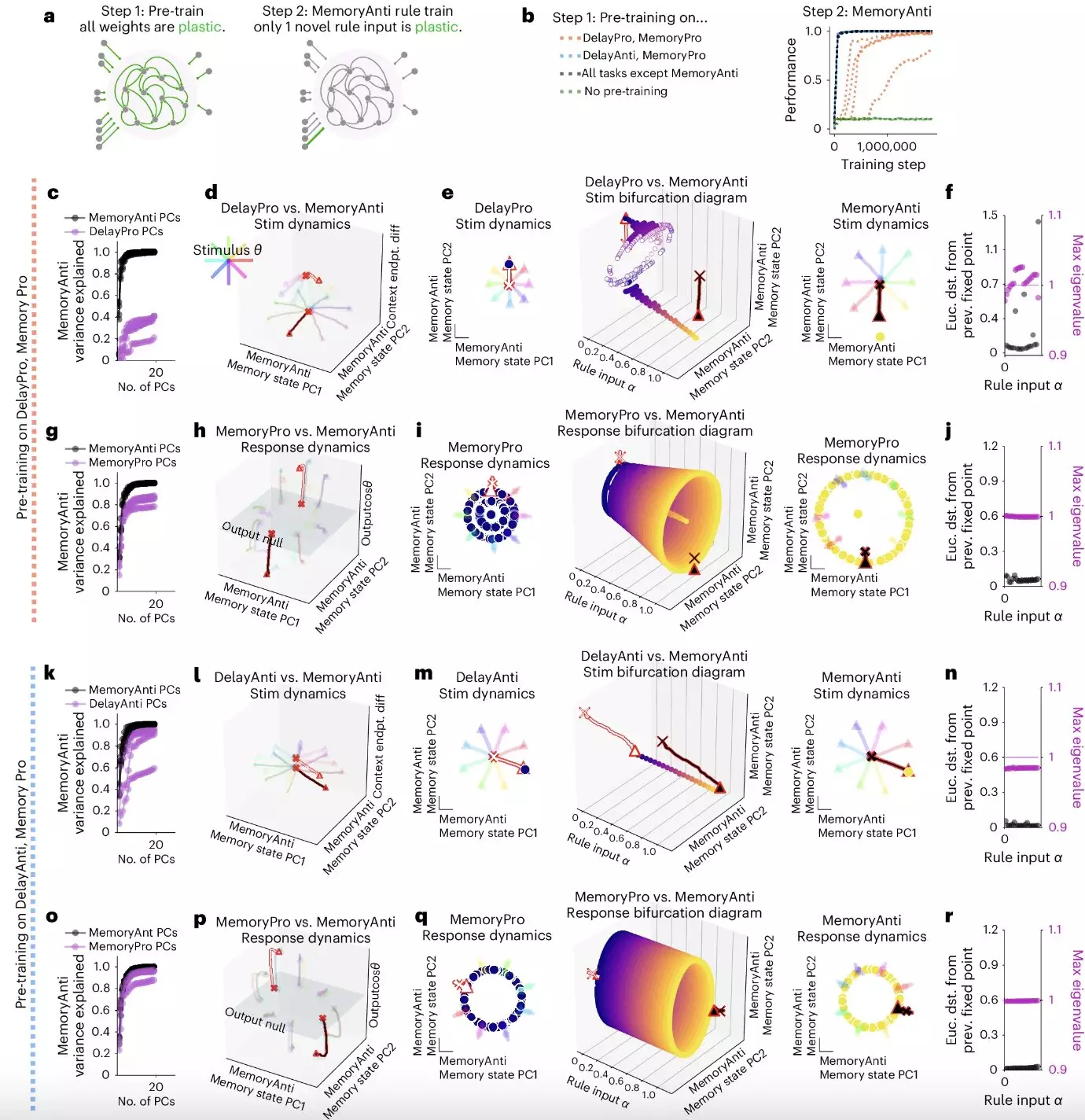Cognitive flexibility is a crucial human capability that allows for the rapid adaptation to new situations and the efficient switching between tasks. While artificial intelligence (AI) has made substantial advancements, it still lacks the same level of flexibility as humans. Recent research has delved into the study of neural computations using artificial neural networks to understand how they can be optimized for multi-tasking and modular computations.
One recent study, conducted by researchers from New York University, Columbia University and Stanford University, focused on training a single neural network to perform 20 related tasks. The study aimed to explore the mechanisms underlying the computations of recurrently connected artificial neural networks. The researchers identified a computational substrate that enables modular computations, referred to as “dynamical motifs.”
The study revealed that dynamical motifs are recurring patterns of neural activity that implement specific computations through dynamics, such as attractors, decision boundaries, and rotations. These motifs were found to be reused across different tasks, showcasing their importance in modular computation. Tasks requiring memory of a continuous circular variable, for example, repurposed the same ring attractors.
Further analyses in the study showed that in convolutional neural networks, dynamical motifs are implemented by clusters of units when the unit activation function is positively restricted. Lesions to these units were found to impair the networks’ ability to perform modular computations. The researchers also observed that motifs were reconfigured for fast transfer learning after an initial learning phase, highlighting their adaptability and importance in compositional computation.
The findings of this study have significant implications for both neuroscience and computer science research. By identifying dynamical motifs as a fundamental unit of compositional computation, researchers can better understand neural processes that underpin cognitive flexibility. These insights could pave the way for the development of new strategies to emulate these processes in artificial neural networks, ultimately enhancing their ability to tackle multiple tasks effectively.
The investigation of dynamical motifs in artificial neural networks sheds light on how these networks can be optimized for cognitive flexibility. By understanding the mechanisms that support modular computations, researchers can bridge the gap between human cognitive capabilities and artificial intelligence. This research opens up exciting avenues for future exploration in the fields of neuroscience and computer science, offering new insights into the development of flexible AI systems.


Leave a Reply